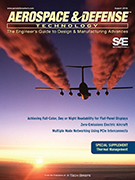Technical Paper
A Boiling Heat Transfer Correlation for Heat Pipes
1985-07-01
851326
Boiling heat transfer in a water heat pipe is investigated with the objective of relating heat flux and temperature drop across the evaporator. Nucleate boiling has been postulated as the heat transfer mechanism at and near the wall. A correlation has been obtained that relates evaporator heat flux and temperature drop to various screen-wick and working fluid properties. It is shown to agree well with other available experimental data.



